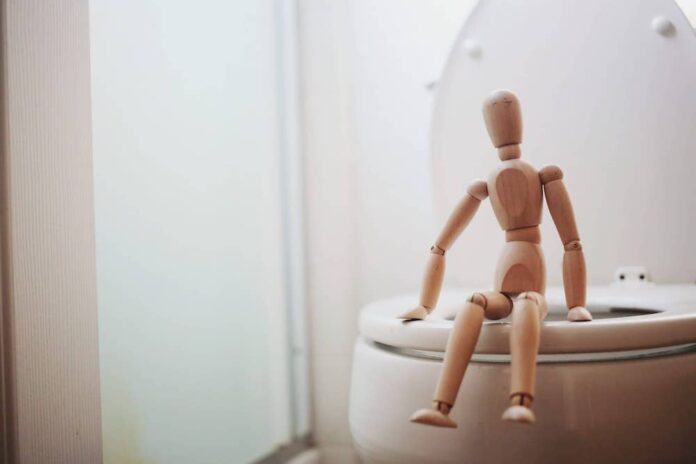Have you ever flushed your toilet and thought, “Oh no! My watch! How will I ever get that back?!” Well, the truth is, you probably won’t get that watch back. That Rolex has gone the same place as the 320 lbs of poop you produce, on average, each year. That place is a water treatment plant and, if you live in New York City, there are 14 facilities where your feces could end up. But who wants to talk about 14 sewage plants when we could talk about the big three? So strap in as we explore the magical world of the NYC sewer treatment system!
Where Does Poop Go In NYC
North River Wastewater Treatment Plant
Have you ever looked at a sewage plant and thought to yourself, “This would make a great place for a park?” Well, that’s what the designers for Riverbank State Park thought when they decided to build a green roof atop the newest sewer treatment plant in NYC. Well, the designers didn’t really “decide” to build a park as much as they “were forced to compromise after massive opposition to the sewage plant.”
When plans were revealed for the sewer plant that would service over 550,000 people, the citizens of Harlem were not too pleased with their new neighbors. The concern was that the smell and emissions from the plant would give people health problems. The city compromised by building a 28-acre park with a multitude of facilities like a theater, a merry-go-round, and three swimming pools. Because, if you want to swim anywhere, it’s above a sewage treatment plant.
The sewage plant opened in 1986 and was a smelly eye-sore until 1993 when the park opened and blocked the smell a little bit. Today the citizens living near the park, between 137th street and 145th, typically aren’t bothered by the plant, most even enjoying the park that sits on top of it.
The Wards Island Wastewater Treatment Plant
Given that the average human produces enough poop to outweigh some full-grown gorillas, you can imagine that some treatment plants need to be massive to clean all that water. Opened in 1937, Wards Island Wastewater Treatment Plant took the heavyweight poop title fast, servicing the sewers of over one million people. This plant is always in beast mode, filtering one million cubic meters of sewage inflow each day. That’s a lot of poo.
Wards Island is a jack of all trades in the waste industry, doing more than just filtering water. It also separates biosolids, that will eventually be used for fertilizer, from many other plants in NYC. Even with this plant’s impressive size, it’s still, somehow, not the biggest water treatment plant in the city.
Newtown Creek Wastewater Treatment Plant
The biggest and the baddest, the Newtown Creek Water Treatment Plant, services 1.3 million people and filters 1.8 million cubic meters of water per day. The 140 feet “sludge digestion eggs” of this plant literally light up the night sky, which is hard to do when your competition is the skyline of Manhattan, Brooklyn, and Queens combined.
Though it was completed in 1967, the plant has undergone significant changes since then, expanding its capabilities and reducing smell and pollution. The plant is so impressive that the city demands to show it off via a visitor’s center, making it the only part of NYC where you can see the city’s water infrastructure in action.
What Happens After Water Treatment?
So there you have it! When you flush your toilet, your poop goes to one of 14 water treatment plants…ideally. The truth is, while most of your poop goes to a water treatment plant, there’s a good chance it’ll end up in the ocean. This is due to the city’s Combined Sewer Overflow system. Essentially, this means that over 60% of NYC sewers are connected. Usually, this is fine. Water just goes to one of the 14 treatment plants. However, things get a little tricky once it rains.
Do you know how the subway will sometimes flood during a super heavy rainstorm? Imagine that, but with sewer water. Well, that’s what happens with super heavy rain. The Combined Sewer Overflow system gets overwhelmed, and the water doesn’t get into a treatment plant. Instead, it usually drains into the rivers and ocean surrounding the city. While this is very intentional, it’s also bad for the environment and the general vibe of the city.
This plan was initially put in place in the 1800s back when any type of running water in a city was considered “nailing it.” However, this pollution has made many waterways in the city polluted beyond reason, and there’s no consensus on how best to stop it. This pollution doesn’t seem to bother many New Yorkers. After all, the Gowanus Canal is one of the most polluted spots in the city, and people are moving to that neighborhood like crazy. However, given that the Clean Water Act exists and that pollution is just a bummer in general, many officials in the city have been asking why NYC leadership isn’t doing more.
So now there you have it. Your watch could be in one of 14 municipal water treatment facilities or the Atlantic Ocean. Either way, you’re probably not getting it back.
But there’s a bigger issue here in that NYC only has 14 water treatment facilities, some of which serve millions of people a day. This means there’s still a ton of pollution getting into the waterways. The story of where your poop goes is ever-changing but also strikingly stagnating. In the end, all we can do is contact local officials and tell them we don’t want poop to go into the Hudson every time it rains. City leadership needs to know you care about this stuff. And you clearly care about it! You asked the internet, “where does my poop go?” Now that you know the answer, the power is in your hands, which you’ve hopefully washed after you’ve done your business.
Russell is a writer and comic based in New York City. His plays have been featured at Penn State’s Cultural Conversation’s Festival, The NYC Thespis Festival, and Imaginarium’s Inaugural Theater Festival. Follow him on TikTok and Instagram @pooleparty528



